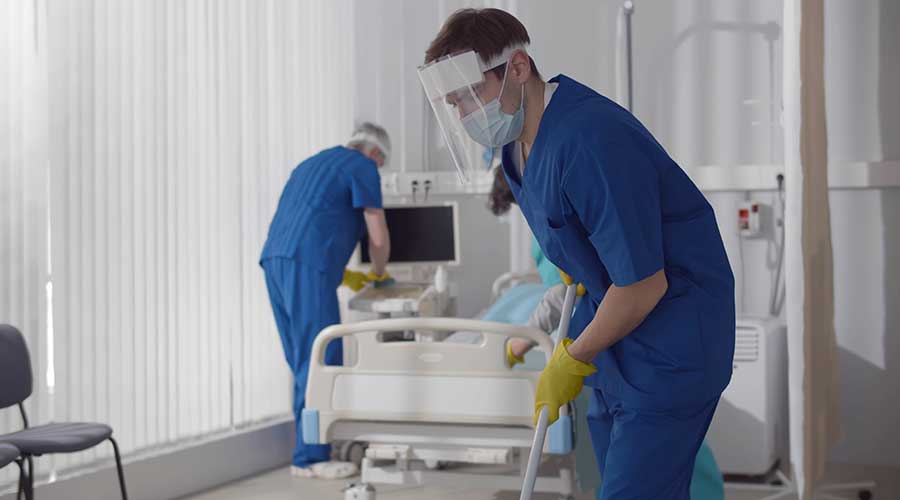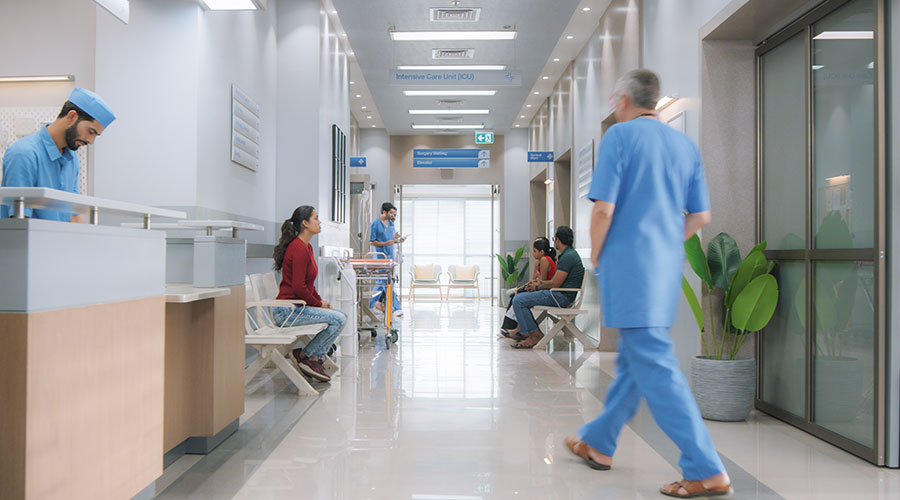Patient safety is one of society’s greatest concerns. It might surprise some people to learn that no standards exist requiring a hospital room to be free of bacteria or viruses in sufficient numbers to cause an infection. A report from the World Health Organization (WHO) shows that where good hand hygiene and other cost-effective practices — cleaning and disinfecting surfaces — are followed, 70 percent of healthcare-associated infections (HAI) can be prevented.
In 2022, U.S. hospitals admitted 33.7 million patients, according to the World Health Organization, and about 7 percent of those patients contracted an HAI. That means that 2,359,000 patients, or one in 14 patients, contracted an HAI in 2022.
If 2,359,000 hospital patients got a HAI in 2022 and 10.4 percent died — using the Centers for Disease Prevention and Control’s estimate in 2022 — that means, there were 245,336 deaths. This places HAIs as one of the leading causes of death in America.
When a patient is discharged from a hospital, the facility’s environmental services (EVS) professional moves in to begin cleaning and disinfecting surfaces in the patient’s room to prevent the spread of infection.
The nurse’s call console, the bedside table, the bed, the mattress and the restroom all get serviced properly. Nothing should be missed. Bed linens and privacy curtains are removed for laundering. Still, dangerous infections spread.
Related: Avoiding HAIs in Healthcare Design
For example, if the outgoing patient was infected with methicillin-resistant Staphylococcus aureus (MRSA), for example, the incoming patient has a 50 percent elevated risk of contracting the same infection, even when a hospital’s cleaning protocol exceeds infection-prevention standards.
Not only does the danger remain in that room. It extends beyond the handful of patients who stay in that room. The pathogen can spread from room to room and potentially throughout the entire facility.
There is no easy way to clean a hospital or to keep it clean. Infection outbreaks have been traced to all manner of contaminated surfaces, including sinks, light switches, computer keyboards, sinks, patient linens and mobile patient care equipment. Improvements in surface cleaning have successfully contained many of these outbreaks.
Recent years have seen cost-cutting in every area of hospitals, including EVS departments. Those workers with cleaning responsibilities cannot hope to decontaminate all high-risk surfaces as often as required. Even if every high-risk, high-touch surface was disinfected, that would not stop the lethal microbes from being spread via surfaces because hospitals face another reality: Pathogens come right back.
At one South Carolina hospital, 36 bed rails were sampled for bacteria just before and after cleaning and then checked at four intervals afterwards. Within three hours, the bacterial burden had rebounded to unsafe levels.
“Our study suggests that cleaning approximately every two hours would be necessary to maintain the population of this pathogen at the proposed non-detectable level,” according to the researchers.
Slowing the acquisition of deadly pathogenic organisms will require a multimodal approach to do everything possible to prevent HAIs. Perhaps it is time for EVS workers, the Cinderellas of infection prevention, to come out of the shadows.
J. Darrel Hicks, BA, MESRE, CHESP, Certificate of Mastery in Infection Prevention, is the past president of the Healthcare Surfaces Institute. Hicks is nationally recognized as a subject matter expert in infection prevention and control as it relates to cleaning. He is the owner and principal of Safe, Clean and Disinfected. His enterprise specializes in B2B consulting, webinar presentations, seminars and facility consulting services related to cleaning and disinfection. He can be reached at darrel@darrelhicks.com, or learn more at www.darrelhicks.com.

 Case Study: How NYU Langone Rebuilt for Resilience After Superstorm Sandy
Case Study: How NYU Langone Rebuilt for Resilience After Superstorm Sandy Frederick Health Hospital Faces 5 Lawsuits Following Ransomware Attack
Frederick Health Hospital Faces 5 Lawsuits Following Ransomware Attack Arkansas Methodist Medical Center and Baptist Memorial Health Care to Merge
Arkansas Methodist Medical Center and Baptist Memorial Health Care to Merge Ground Broken on Intermountain Saratoga Springs Multi-Specialty Clinic
Ground Broken on Intermountain Saratoga Springs Multi-Specialty Clinic Electrical Fire Tests Resilience of Massachusetts Hospital
Electrical Fire Tests Resilience of Massachusetts Hospital